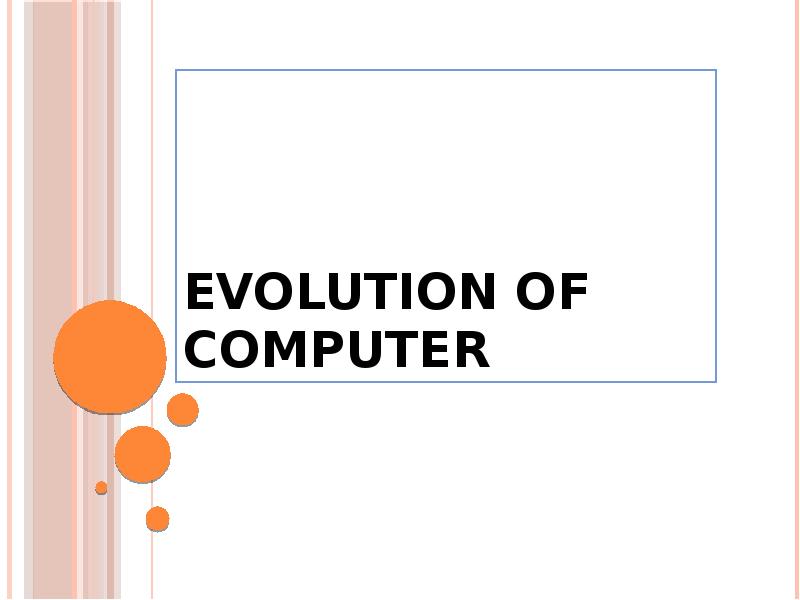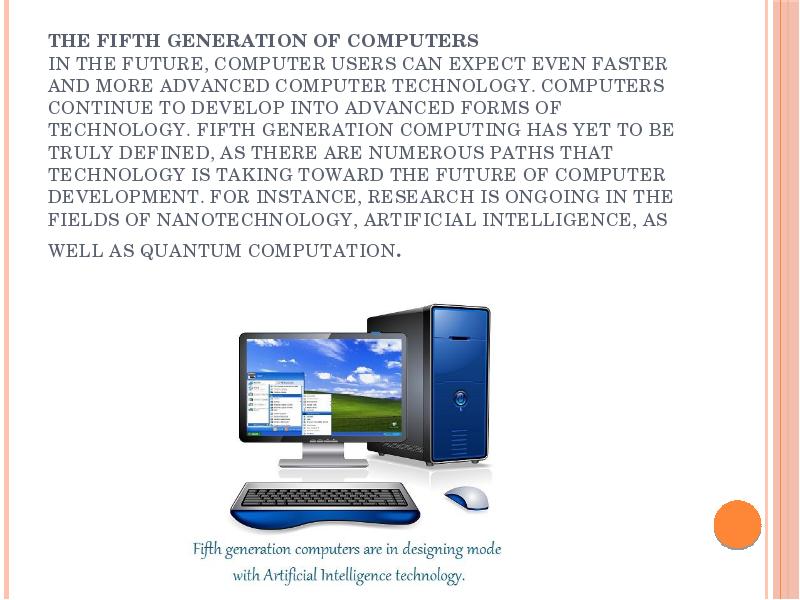Evolution of computer презентация
Содержание
- 4. First Generation Computers First generation computers bore little resemblance to computers
- 5. Second generation of computers The second generation (from 1956 to 1963)
- 6. Third Generation Computers From 1964 to 1971 computers went through a
- 7. Fourth Generation Computers The changes with the greatest impact occurred in
- 8. The Fifth Generation of Computers In the future, computer users can
- 10. Скачать презентацию









Слайды и текст этой презентации
Похожие презентации





























